Most of the construction of the fence on the Russian border of Latvia is planned to be completed this year
“Unforgivably slow delay in the construction of the eastern border of our country”, Edgars Rinkēvičs came up with these words only a month after making the solemn promise and assuming the office of the President in August last year, when he arrived and personally inspected the eastern border of Latvia.
“Unfortunately, we are have taken control so far that all work was stopped. Everyone is now afraid of criminal proceedings at the end of criminal proceedings, but this is a factor that needs to be discussed. The goal after this visit is to discuss practical work that needs to be done – legal, legislative, to speed up the processes at the September meeting of the National Security Council. Because if we continue like this, there is nothing to lie to ourselves, the construction of the eastern border will not happen in the near future, because there is simply too much bureaucracy, too many administrators, but there are few people who do it.”
The border between Latvia and Russia is 283.6 kilometers long. The work on the construction of the fence started at the end of 2015, however, in 2019, the work was stopped because a criminal case was initiated against the entrepreneur “Ceļu būvnečias sibedria “Igate”” for a large-scale fraud committed during the construction process. For example, the indictment mentions that the objects to be built were changed to cheaper ones in the course of construction, including that the fence itself was installed cheaper. In the case, the responsible persons of the State Border Guard and the construction supervisor have also been accused of supporting fraud.
Building a fence is a good exercise for NBS units
Last year, while visiting Latvia and also the extreme eastern border of the European Union and NATO, the President admitted that the construction of the fence should take into account new conditions, lessons learned from the war in Ukraine, and cooperate with the army. Today, these instructions have turned into practical works, and the construction of the first stage after five years has been started by the National Armed Forces (NBS).
“We were invited, the minister issued an order, and we are fulfilling it,” said NBS commander Lieutenant General Leonids Kalniņš, noting that
currently, from 50 to 90 soldiers and national guardsmen from different regions of Latvia are involved in the construction of a 20-kilometer long section every day, which is planned to be completed within four months.
Currently, 2.5 kilometers of fence have already been built.
“It is a good training for engineering units. We have quite strong engineers, of course we can operate in our landfills, but here there is such a practical benefit for both of us. We are both training and also nationally benefiting,” Kalniņš said.
Photo: Armīns Janiks, Ministry of Defense
Photo: Armīns Janiks, Ministry of Defense
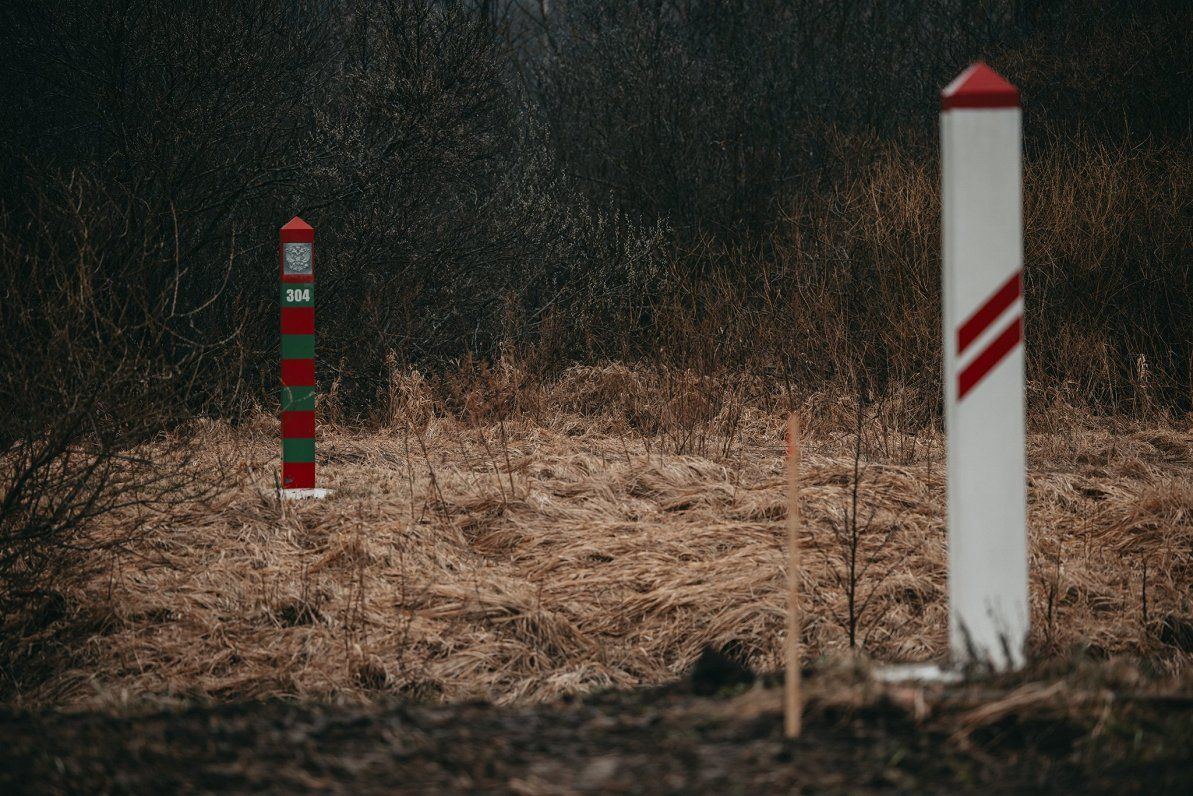
Photo: Armīns Janiks, Ministry of Defense
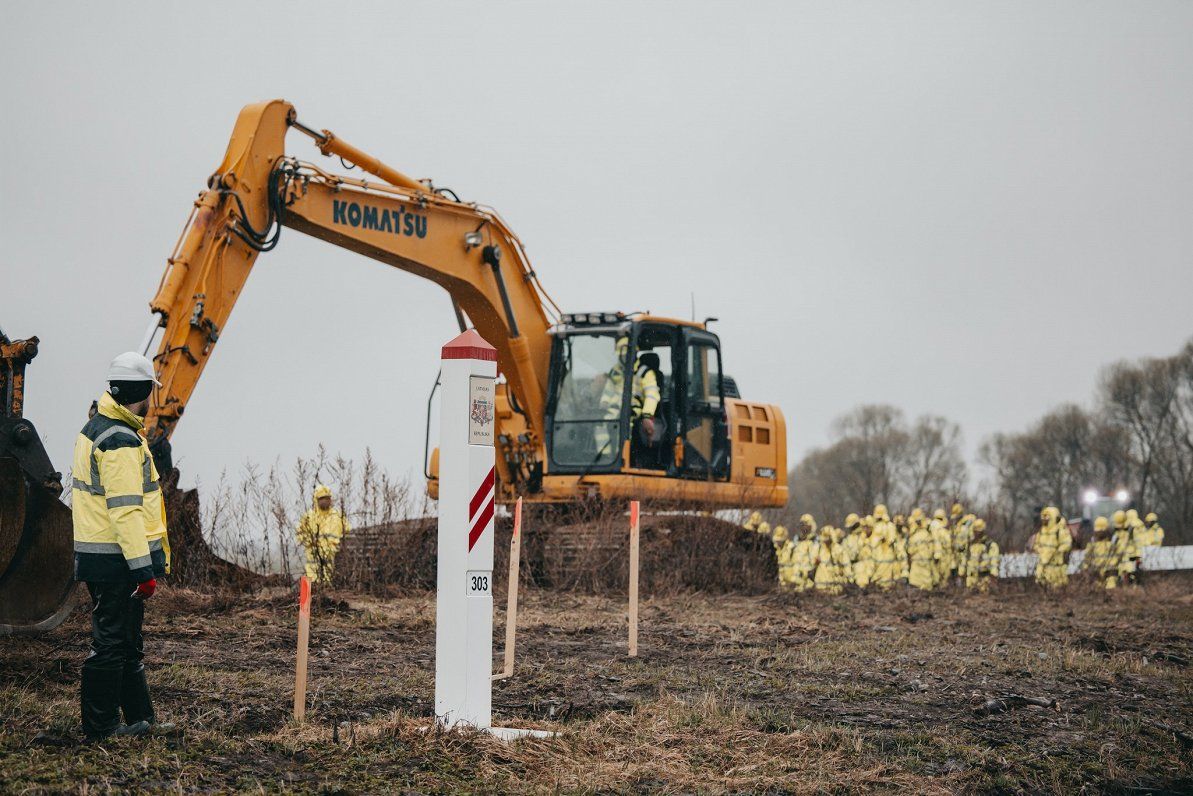
Photo: Armīns Janiks, Ministry of Defense
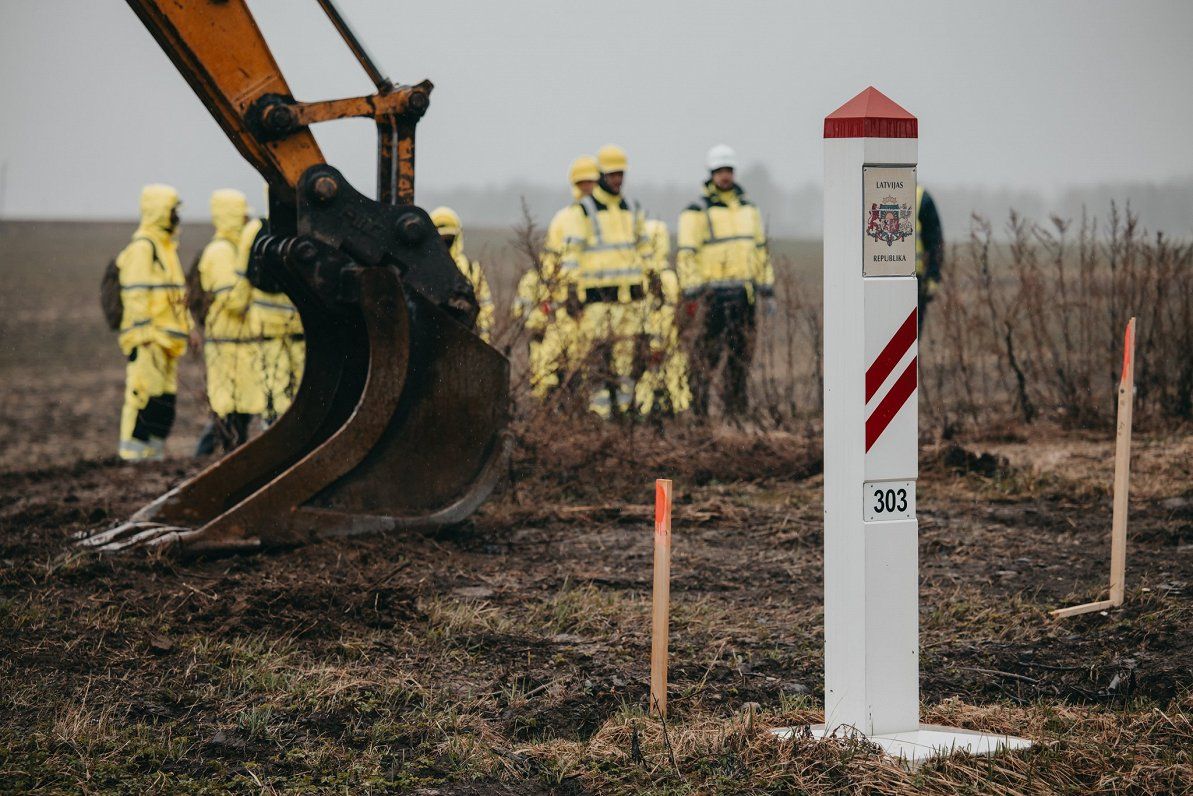
Photo: Armīns Janiks, Ministry of Defense
14 contracts with six entrepreneurs
By 2019, almost 100 kilometers of fence and most of the border infrastructure, i.e. patrol paths, footbridges and culverts, have been built on the Latvian-Russian border. Since the summer of last year, the continuation and supervision of these works has been entrusted to VNĪ, which is already carrying out similar works on the Latvia-Belarus border. For the construction of the fence on the Russian border, 14 contracts were signed with six construction contractors without the already mentioned cooperation with NBS. The priority is the completion of the already built infrastructure and the construction of the fence in sections where it is not yet there.
Yeļena Gavrilova, a member of the board of VNĪ, explained the progress of the construction of the remaining 180 kilometers of the fence: “In the next few weeks, both SIA “Citrus Solutions” and SIA “Hagberg Construction” will start work on the priority stages, as they are already in the process of designing. The other contractors will gradually start work until June. end with the idea that the task is to complete the entire fence by the end of the year.”
This year, the fence will be built only in the priority sections, but the construction of the particularly difficult sections around 30 kilometers in length will continue next year as well.
“Taking into account our experience with the construction of the Latvian-Belarusian border fence, we understood that if we want to ensure its pace, because the government’s task was to ensure the construction of the fence as quickly as possible, then a decision was made that we do not go with one general company at the moment, but divide the border in several stages so that as many builders as possible can be attracted. When we are not talking about a very large volume, even medium-sized companies can participate in the procurement,” explained Gavrilova.
On the other hand, cooperation with NBS is designed to reduce risks.
“When we were working on the construction of the fence in Belarus, we realized that our general company had a challenge to attract subcontractors. Then we had a plan B, so that maybe we take on the general role ourselves and then test how we can implement some stage with our soldiers, because , if something goes wrong with one of the builders, then we will already have 80 people with experience who will be able to connect and finish the fence,” said the member of the VNĪ board.
The local farmer is skeptical
Border farmer Guntars Bartkevičs looks at the fact that an important state security infrastructure is being built not by a businessman, but by soldiers, with some caution. The land managed by him in Baltinava Parish borders Russia for 9 kilometers. He has noticed activity on the border, including on his land, since the beginning of April.
According to his observations, the soldiers are young and have little experience, which probably does not contribute to the efficient use of state resources – “I don’t want to throw a stone in anyone’s garden, but we see this in the field as well and sometimes it seems that there are too many of them”.
Compensation for damages is provided
It must be said here that the coordination includes the compensation of losses if any fields are driven off or damaged in any other way. As it has rained a lot in the eastern border of Latvia in recent days, access roads are also at risk, which can be quickly damaged due to excessive humidity. This is also being thought about this time, said Sergejs Maksimovs, Chairman of Balvu District (“Latgale Party”):
“Perhaps the people of the border of Belarus were more dissatisfied than that there were strict deadlines and paces and that there were not only Latvian, but also foreign builders. They looked more at the deadlines than at what remains after them. We have all learned – both the municipality and VNĪ.
Currently, already in the task, as an example I can mention, it is expected that the entire infrastructure that you [būvnieki] damage, everything will have to be restored at your own expense.”
Bartkevičs, a local farmer who manages several thousand hectares of land on the border and is engaged in grain cultivation, is also concerned about another important problem – beavers – due to the fence. Currently, the river will remain behind the fence, where beavers often make dams.
“If, for example, some beavers blocked the river, then we coordinated with the border guard of that country – the border guard allowed us to clean the beaver dams. At the moment, if a fence is put up there, I will not physically reach there with an excavator, even if I tune in,” said the farmer, explaining that it can threaten agricultural volumes.
Maksimovs, the representative of the local authority, has observed that, in general, the owners of the border lands treat the fence construction works with understanding.
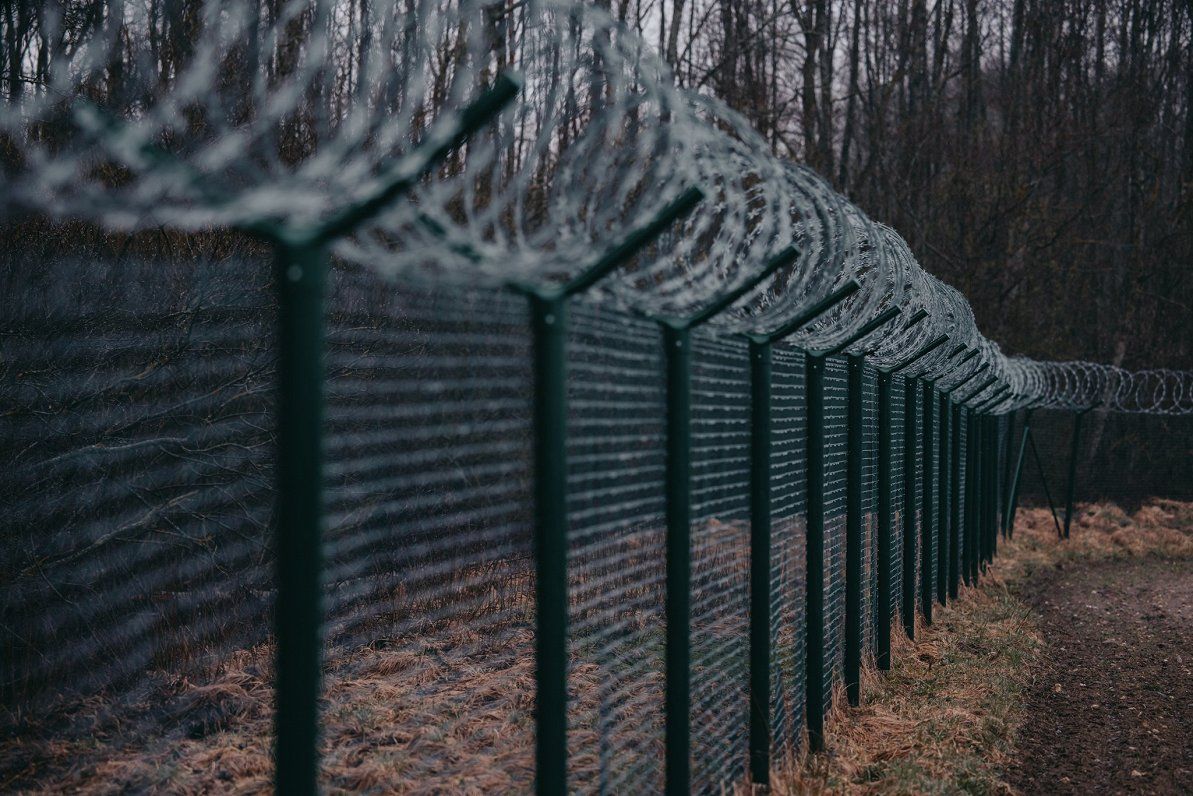
Photo: Armīns Janiks, Ministry of Defense
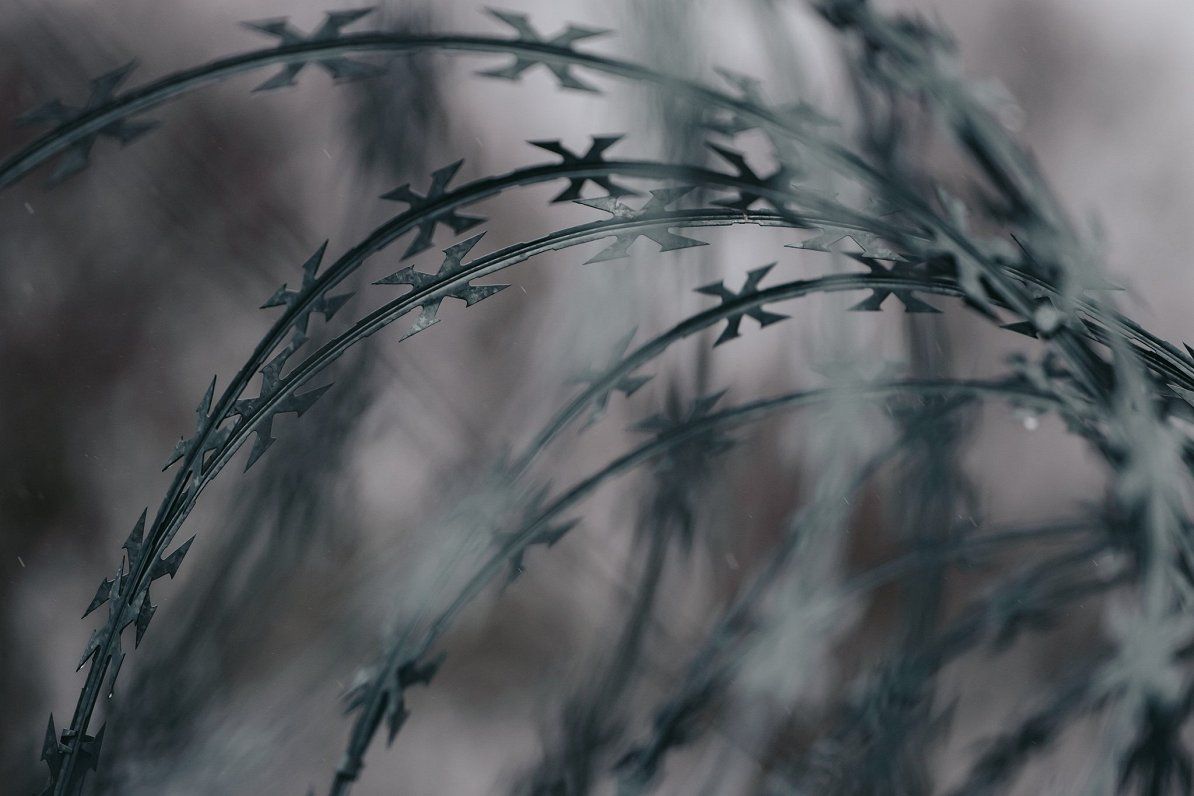
Photo: Armīns Janiks, Ministry of Defense
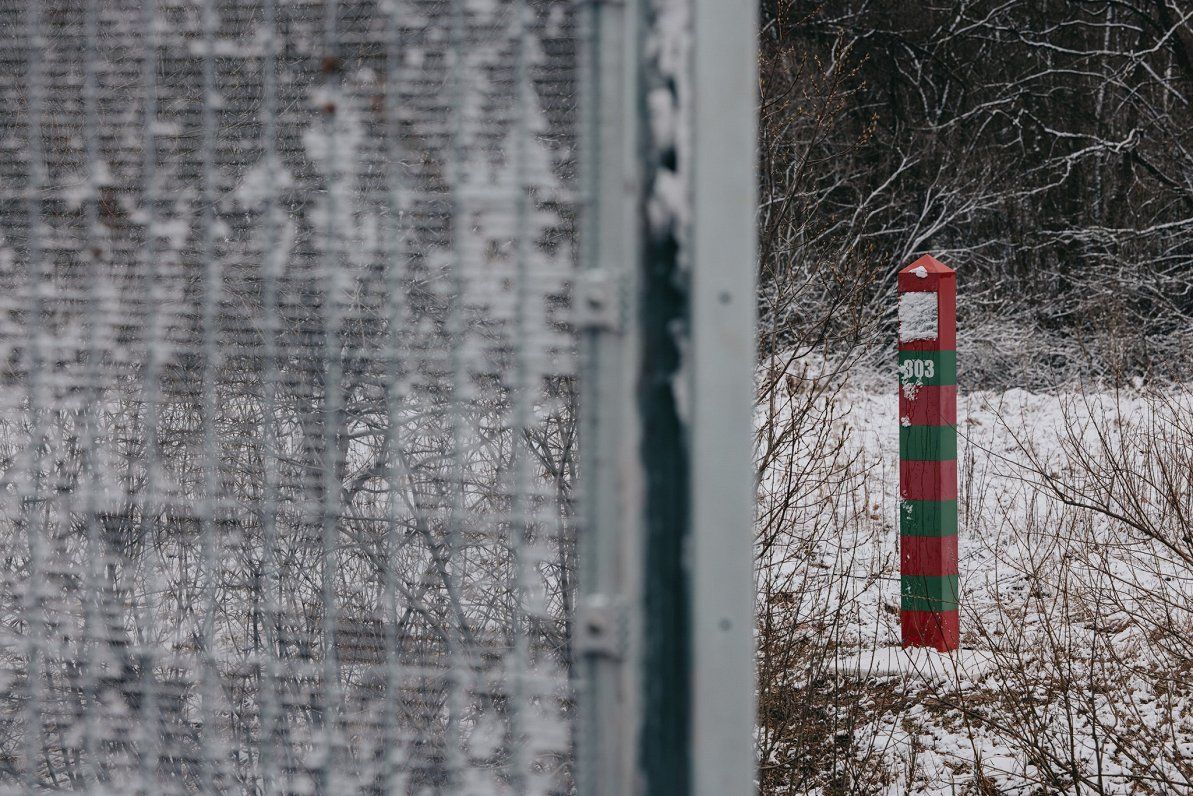
Photo: Armīns Janiks, Ministry of Defense
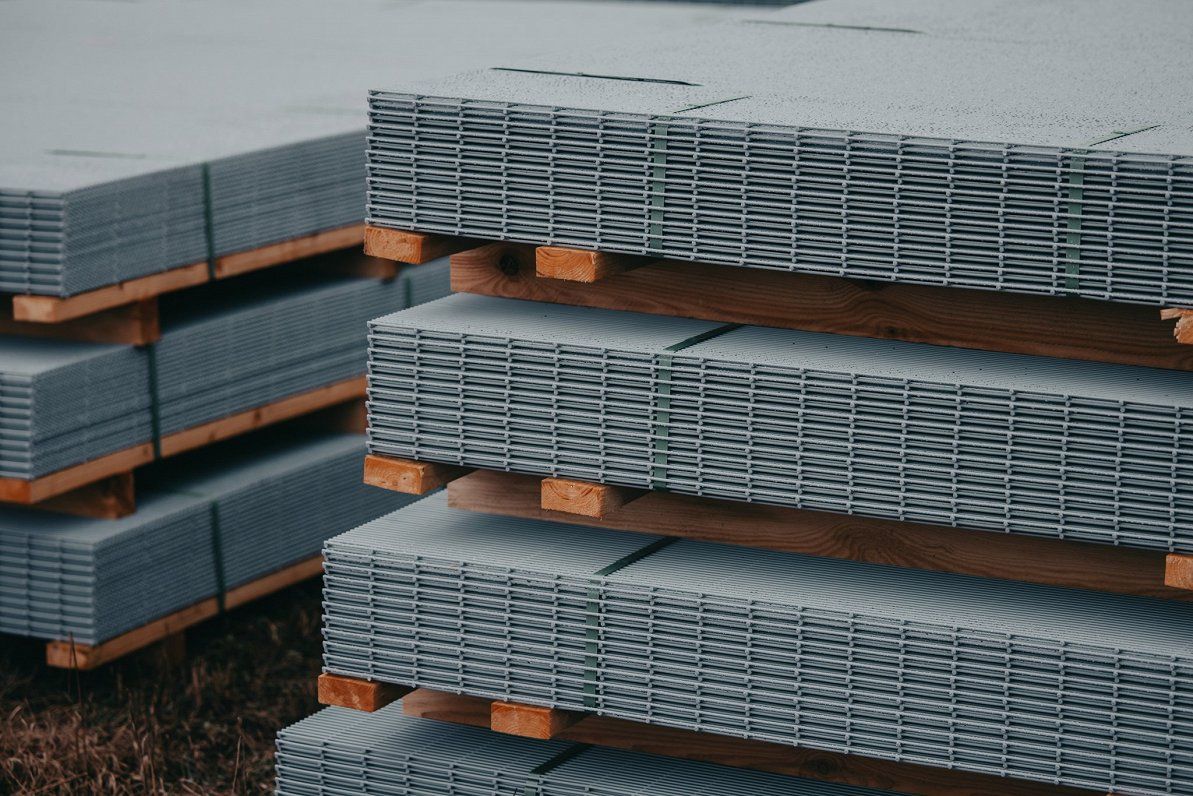
Photo: Armīns Janiks, Ministry of Defense
Checks the compliance of the previously erected fence
In parallel with the construction of the new fence, an audit of the previously built fence and infrastructure is also underway, after which it will be understood whether any parts of the already installed fence will have to be redone, Gavrilova said.
The previously built fence is technically different and is more psychological than physical, observed Maksimov: “Even from the same national road, you can see the difference between the previously built fence and the current fence. But this fence is a very serious obstacle that will protect residents from the hybrid threat.”
At that time, the risks were also lower. And here it must be said – also the costs.
Just 9 years ago, 17 million euros were calculated for the construction of the Latvian-Russian border infrastructure and fence, but today the costs for the fence alone have almost increased tenfold.
VNĪ estimates that the costs could reach almost 150 million euros. The most expensive costs are the pontoon solution in the swampy areas of the border, which are a large part of the border.
50 million euros have already been allocated to the priority stages on the Russian border, but 120 million euros are planned to be allocated to these works this year.
Among other things, the 112-kilometer land fence on the Latvian-Belarusian border was completed last year. But along the public waters, or in the most difficult sections, the construction of the fence is planned to be completed by July of this year, 19 kilometers long. Work is also going on in parallel with the construction of the rest of the border infrastructure, which is planned to be completed in 2025.
The fence is the first serious barrier to illegal border crossing
In total, more than 1,350 people have been prevented from illegally crossing the border this year, compared to almost 14,000 last year. As explained by the head of the Daugavpils administration of the State Border Guard, lieutenant colonel Raimonds Kublickis, although the fence is only one of the components of the common infrastructure of the border, it is the first serious barrier to illegal entry into the country.
“For an ordinary person without any special means, it is a primal obstacle that already causes difficulties for the person, and other ways of solution must be sought.
Even if a person is provided with some technical means or mechanisms to damage it, it allows us to get that important time, minutes, to ensure a timely response.”
In parallel with the construction of the fence and the arrangement of the infrastructure of the extreme eastern border of Latvia, the European Union and NATO, the military strengthening of the border and the implementation of the anti-mobility plan have also been started. It is part of the creation of the Baltic defense line, which will include the creation of support points for NBS units along the entire border of Russia and Belarus – defensive positions for soldiers and fortified defensive positions, various obstacles, anti-tank ditches, ammunition and mine depots.
During the next five years, the defense industry will invest 303 million euros for these measures.
Tags: soldiers guards day NBS builds fence LatvianRussian border Article
-













